Best Practices for Managing Jenkins Pipelines in Kubernetes Environments
- Nitin Yadav
- Knowledge
About
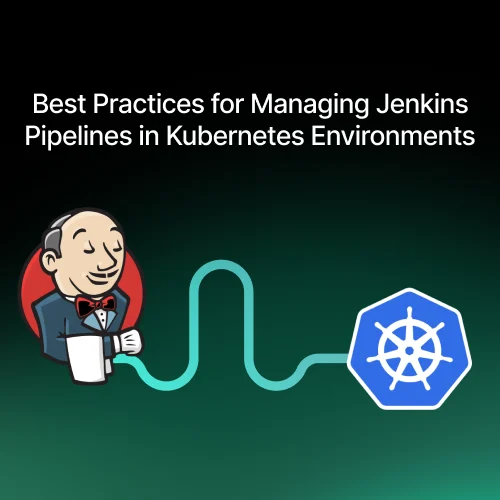
Managing Jenkins pipelines in Kubernetes requires efficient optimization to enhance scalability, security, and efficiency. This guide explores best practices.
Industries
- Automation, CI/CD, DevOps, Jenkins, Kubernetes
- Automation, CI/CD, DevOps, Jenkins, Kubernetes
Share Via
Introduction
Why Kubernetes-Based CI/CD Pipelines Need Efficient Management
As modern software development moves towards containerization and cloud-native architectures, organizations rely on Jenkins and Kubernetes to streamline their Continuous Integration (CI) and Continuous Deployment (CD) pipelines. Kubernetes provides scalability, flexibility, and automation, but managing Jenkins pipelines in a Kubernetes environment presents unique challenges that require careful optimization.
Without proper management, Jenkins pipelines running in Kubernetes can suffer from slow build times, inefficient resource utilization, security risks, and operational overhead. Organizations must adopt best practices to ensure their pipelines remain scalable, secure, and efficient.
Challenges of Running Jenkins Pipelines in Kubernetes
While Kubernetes offers several advantages for CI/CD pipelines, there are key challenges organizations face when managing Jenkins in Kubernetes:
- Resource Management: Running Jenkins agents as Kubernetes pods can lead to high resource consumption, making it crucial to optimize resource allocation.
- Security Risks: Exposing Jenkins externally, handling credentials securely, and enforcing access controls are common security concerns.
- Complexity in Pipeline Execution: Kubernetes-based CI/CD pipelines must efficiently integrate with Kubernetes services, requiring proper orchestration and monitoring.
- Scalability Issues: Without proper configuration, Jenkins dynamic agents may not scale efficiently, leading to pipeline failures or resource wastage.
- Troubleshooting and Monitoring: Debugging issues in a distributed Kubernetes cluster can be difficult without proper logging and monitoring tools.
How Optimizing Jenkins Pipelines in Kubernetes Improves Scalability, Security, and Efficiency
To overcome these challenges, organizations must implement best practices for managing Jenkins pipelines in Kubernetes. A well-optimized Jenkins setup in Kubernetes provides the following benefits:
- Scalability: Using Kubernetes Dynamic Agents ensures that Jenkins can scale up and down based on workload demand, optimizing resource usage.
- Security: Enforcing Role-Based Access Control (RBAC), managing secrets with Kubernetes Secrets, and restricting network access improve pipeline security.
- Efficiency: By utilizing parallel builds, caching mechanisms, and pipeline optimizations, Jenkins pipelines can reduce execution time and improve resource utilization.
- Reliability: Kubernetes’ self-healing capabilities help automatically restart failed pipeline pods, ensuring high availability.
- Monitoring and Observability: Integrating Prometheus, Grafana, and Loki allows DevOps teams to gain real-time insights into Jenkins pipeline performance.
What to Expect in This Guide
In this guide, we will explore the best practices for managing Jenkins pipelines in Kubernetes environments, covering:
- Key considerations when setting up Jenkins on Kubernetes.
- Best practices for optimizing pipeline execution, security, and scalability.
- Scaling Jenkins dynamically using Kubernetes-native tools.
- Handling failures, rollbacks, and monitoring pipelines effectively.
- Future trends in Kubernetes-native CI/CD automation.
Setting Up Jenkins in Kubernetes: Key Considerations
Deploying Jenkins on Kubernetes
Using Helm for Installation and Management
Helm simplifies Jenkins deployment in Kubernetes. Run the following command to install Jenkins using Helm:
helm repo add jenkinsci https://charts.jenkins.io
helm repo update
helm install jenkins jenkinsci/jenkins --set controller.serviceType=LoadBalancer
Persistent Storage: Persistent Volumes (PV) & Persistent Volume Claims (PVC)
To ensure Jenkins retains job history and configurations, configure a Persistent Volume (PV) and Persistent Volume Claim (PVC):
apiVersion: v1
kind: PersistentVolumeClaim
metadata:
name: jenkins-pvc
spec:
accessModes:
- ReadWriteOnce
resources:
requests:
storage: 10Gi
RBAC & Security: Role-Based Access Control for Jenkins Users
Use RBAC to restrict unauthorized access to Jenkins:
apiVersion: rbac.authorization.k8s.io/v1
kind: RoleBinding
metadata:
name: jenkins-rolebinding
subjects:
- kind: ServiceAccount
name: jenkins
namespace: default
roleRef:
kind: Role
name: jenkins-role
apiGroup: rbac.authorization.k8s.io
Using Kubernetes Dynamic Agents
Scaling Jenkins Agents Dynamically with the Jenkins Kubernetes Plugin
Enable dynamic scaling of Jenkins agents with Kubernetes by configuring the plugin in Jenkins UI:
kubernetes:
cloudName: "kubernetes"
jenkinsUrl: "http://jenkins.default.svc.cluster.local:8080"
namespace: "default"
jnlpImage: "jenkins/inbound-agent"
Configuring Ephemeral Build Nodes for Optimized Resource Usage
Jenkins dynamically provisions ephemeral agent pods:
apiVersion: v1
kind: Pod
metadata:
labels:
jenkins/agent: true
spec:
containers:
- name: jnlp
image: jenkins/inbound-agent
Integrating Jenkins with Kubernetes Services
Leveraging ConfigMaps, Secrets, and Service Accounts for Secure Access
kubectl create secret generic jenkins-secrets --from-literal=username=admin --from-literal=password=securepass
Best Practices for Managing Jenkins Pipelines in Kubernetes
1. Optimize Build Performance
- Use parallel builds and Docker layer caching.
- Store artifacts in AWS ECR, GCR, or Docker Hub.
2. Secure Jenkins Pipelines
- Use Kubernetes Secrets for credentials.
- Implement RBAC policies to limit access.
3. Automate CI/CD Workflows
- Use GitOps with ArgoCD or FluxCD.
- Automate builds with multi-branch pipelines in Jenkins.
4. Use Kubernetes-Native CI/CD Tools
- Compare Tekton, ArgoCD, and Jenkins for Kubernetes-native workflows.
5. Monitor and Troubleshoot Pipelines
- Use Prometheus & Grafana for monitoring Jenkins.
- Aggregate logs with Loki, Fluentd, or ELK Stack.
Scaling Jenkins Pipelines in Kubernetes
Horizontal Pod Autoscaling (HPA) for Jenkins Agents
To dynamically scale Jenkins agents based on CPU and memory usage, configure Horizontal Pod Autoscaler (HPA) in Kubernetes.
Step 1: Enable Metrics Server
Ensure that the Kubernetes Metrics Server is running:
kubectl apply -f https://github.com/kubernetes-sigs/metrics-server/releases/latest/download/components.yaml
Step 2: Configure HPA for Jenkins Agents
Create an HPA configuration that automatically scales Jenkins agent pods:
apiVersion: autoscaling/v2beta2
kind: HorizontalPodAutoscaler
metadata:
name: jenkins-agent-hpa
spec:
scaleTargetRef:
apiVersion: apps/v1
kind: Deployment
name: jenkins-agent
minReplicas: 1
maxReplicas: 10
metrics:
- type: Resource
resource:
name: cpu
targetAverageUtilization: 70
Apply the configuration:
kubectl apply -f jenkins-agent-hpa.yaml
Node Affinity & Taints for Resource Optimization
To assign Jenkins workloads to specific Kubernetes nodes with optimized resources:
Step 1: Add Labels to a Node
kubectl label nodes worker-node jenkins-agent=true
Step 2: Configure Jenkins Agents to Use Node Affinity
apiVersion: apps/v1
kind: Deployment
metadata:
name: jenkins-agent
spec:
template:
spec:
nodeSelector:
jenkins-agent: "true"
Using Spot Instances for Cost Optimization
To reduce costs, run Jenkins agents on AWS Spot Instances or GKE Preemptible VMs.
Step 1: Deploy Jenkins Agents on Spot Instances in AWS
apiVersion: apps/v1
kind: Deployment
metadata:
name: jenkins-agent
spec:
template:
spec:
nodeSelector:
spot-instance: "true"
Step 2: Enable Preemptible VMs in GKE
gcloud container node-pools create preemptible-pool \
--cluster my-cluster \
--preemptible \
--num-nodes 3
Handling Failures and Rollbacks in Jenkins Pipelines
Implementing Automated Rollbacks
Use Canary Deployments and Blue-Green Deployments to roll back faulty releases.
Example: Blue-Green Deployment with Kubernetes
apiVersion: apps/v1
kind: Deployment
metadata:
name: jenkins-blue
spec:
replicas: 3
template:
spec:
containers:
- name: app
image: my-app:v1
Switch traffic to the new version only after verification.
Pipeline Resilience Strategies
Enable retry mechanisms and automatic re-execution of failed pipelines:
Example: Jenkins Retry Logic
pipeline {
agent any
stages {
stage('Test') {
steps {
retry(3) {
sh 'pytest tests/'
}
}
}
}
}
Disaster Recovery for Jenkins in Kubernetes
Use Velero to back up Jenkins configurations and recover in case of failures.
Step 1: Install Velero
velero install --provider aws --bucket my-velero-bucket --backup-location-config region=us-east-1
Step 2: Create a Backup
velero backup create jenkins-backup --include-namespaces=jenkins
Step 3: Restore from Backup
velero restore create --from-backup jenkins-backup
Real-World Case Studies: Managing Jenkins in Kubernetes
Optimizing CI/CD at Scale: Lessons from Large-Scale Jenkins Implementations
Organizations running large-scale Jenkins CI/CD pipelines in Kubernetes often face challenges with resource constraints, slow builds, and pipeline failures.
Case Study: Scaling Jenkins for a Global E-Commerce Platform
- Challenge: High-frequency deployments (500+ builds per day) were slowing down due to inefficient resource allocation.
- Solution: Implemented Kubernetes Dynamic Agents to scale Jenkins workers on demand, reducing queue times by 80%.
- Implementation:
apiVersion: apps/v1
kind: Deployment
metadata:
name: jenkins-agent
spec:
replicas: 5
template:
spec:
containers:
- name: jenkins-agent
image: jenkins/inbound-agent
- Outcome: Faster builds, reduced infrastructure costs, and improved developer productivity.
Migrating from Traditional CI/CD to Kubernetes-Based Jenkins Pipelines
Organizations transitioning from bare-metal or VM-based Jenkins setups to Kubernetes experience improved flexibility and resilience.
Case Study: CI/CD Migration for a Fintech Company
- Challenge: Jenkins running on traditional servers led to frequent downtime and manual scaling efforts.
- Solution: Moved Jenkins to Kubernetes with Helm-based deployments and Persistent Volume Claims (PVCs) for storage.
- Implementation:
helm install jenkins jenkinsci/jenkins --set persistence.enabled=true
- Outcome: 99.9% uptime, automated scaling, and self-healing capabilities.
Improving Security and Compliance in Jenkins CI/CD Pipelines
Security and compliance are critical, especially in regulated industries (finance, healthcare, etc.).
Case Study: Securing Pipelines for a Healthcare SaaS Provider
- Challenge: Jenkins pipelines lacked proper RBAC enforcement and secret management.
- Solution: Integrated HashiCorp Vault and Kubernetes Secrets to manage credentials securely.
- Implementation:
kubectl create secret generic jenkins-secrets --from-literal=username=admin --from-literal=password=securepass
- Outcome: Achieved SOC 2 compliance, improved auditability, and enhanced security.
Future Trends in Jenkins Pipeline Management in Kubernetes
Kubernetes-Native CI/CD Pipelines (Tekton, ArgoCD)
As CI/CD evolves, Kubernetes-native solutions like Tekton and ArgoCD are replacing Jenkins for some use cases.
Example: Tekton Pipeline for Kubernetes Deployments
apiVersion: tekton.dev/v1beta1
kind: Pipeline
metadata:
name: deploy-pipeline
spec:
tasks:
- name: deploy
taskRef:
name: deploy-to-k8s
- Why It Matters: Tekton removes the need for Jenkins agents, making pipelines truly cloud-native.
AI-Driven Pipeline Optimization: Predicting Failures Using ML-Based Analytics
- Machine Learning (ML) models are being used to predict pipeline failures before they happen.
- AI-driven CI/CD tools analyze build history to detect anomalies and recommend optimizations.
Example: Prometheus AI-Powered Alerting
apiVersion: monitoring.coreos.com/v1
kind: PrometheusRule
metadata:
name: ai-prediction-rule
spec:
groups:
- name: predictive-alerts
rules:
- alert: HighFailureRate
expr: job:build_failures:rate5m > 0.1
Serverless CI/CD with Knative & Jenkins X
- Knative enables serverless CI/CD pipelines, reducing infrastructure overhead.
- Jenkins X offers automated GitOps-driven CI/CD for Kubernetes.
Example: Deploying Serverless CI/CD with Knative
kn service create ci-pipeline --image gcr.io/my-project/ci-worker
Conclusion
Managing Jenkins pipelines in Kubernetes requires strategic planning, security enforcement, and continuous optimization. By implementing Kubernetes Dynamic Agents, Horizontal Pod Autoscaling (HPA), RBAC policies, and automated rollback mechanisms, organizations can build resilient, scalable, and efficient CI/CD pipelines.
Key best practices include:
- Scaling Jenkins dynamically with Kubernetes-native tools like HPA and Node Affinity.
- Securing pipelines by leveraging Kubernetes Secrets, HashiCorp Vault, and RBAC.
- Optimizing performance with parallel builds, caching, and ephemeral agent nodes.
- Monitoring and troubleshooting using Prometheus, Grafana, and centralized logging solutions.
- Automating deployments using GitOps workflows (ArgoCD, Tekton) and Kubernetes-native CI/CD solutions.
The future of Jenkins in Kubernetes lies in AI-driven pipeline optimizations, serverless CI/CD with Knative, and deeper integrations with Kubernetes-native automation tools.
Looking for expert guidance on managing Jenkins pipelines in Kubernetes? SquareOps provides cutting-edge DevOps solutions to help you optimize, scale, and secure your CI/CD workflows in Kubernetes environments. Contact SquareOps today for customized CI/CD consulting, Kubernetes integration, and automation strategies!
Frequently asked questions
Jenkins agents use the Kubernetes plugin to launch ephemeral agent pods that scale automatically based on pipeline load.
Use RBAC, Kubernetes Secrets, HashiCorp Vault, and network policies to secure Jenkins instances and pipelines.
Jenkins uses the Kubernetes plugin to launch build agents, and kubectl or Helm for deploying applications to Kubernetes clusters.
Integrate Prometheus, Grafana, and Loki for real-time metrics, logging, and monitoring of Jenkins builds and deployments.
Helm simplifies Jenkins installation, upgrades, and configuration management in Kubernetes environments.
Use parallel builds, shared Docker layer caching, and ephemeral Jenkins agents to reduce pipeline execution times.
Implement Canary Deployments, Blue-Green Deployments, and Kubernetes Rollouts to ensure safe rollbacks.
Jenkins is a general-purpose CI/CD tool, while Tekton is a Kubernetes-native, serverless CI/CD framework for cloud-native applications.
Use Velero, Persistent Volume Claims (PVCs), or Kubernetes snapshots to back up Jenkins data.
AI-driven optimizations, serverless CI/CD with Knative, and GitOps workflows are key future trends in Kubernetes CI/CD.
Related Posts
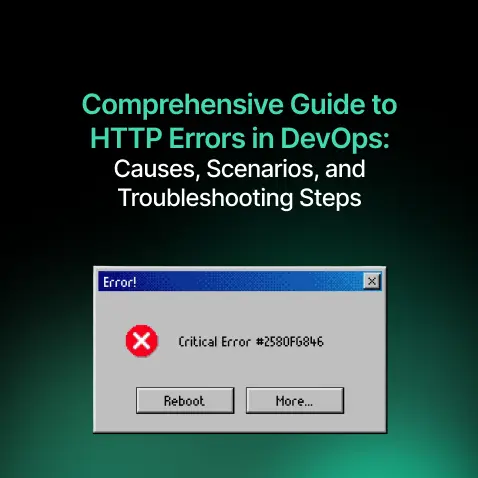
Comprehensive Guide to HTTP Errors in DevOps: Causes, Scenarios, and Troubleshooting Steps
- Blog
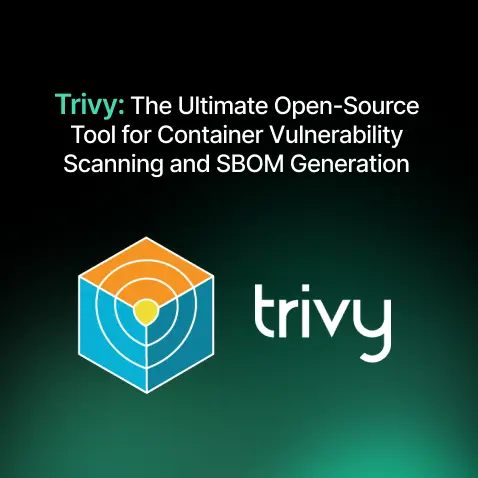
Trivy: The Ultimate Open-Source Tool for Container Vulnerability Scanning and SBOM Generation
- Blog

Prometheus and Grafana Explained: Monitoring and Visualizing Kubernetes Metrics Like a Pro
- Blog
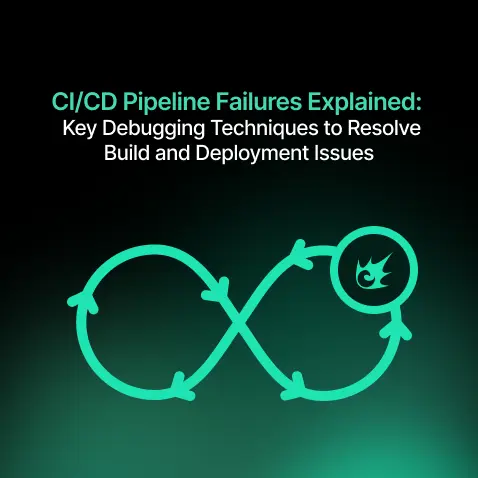
CI/CD Pipeline Failures Explained: Key Debugging Techniques to Resolve Build and Deployment Issues
- Blog
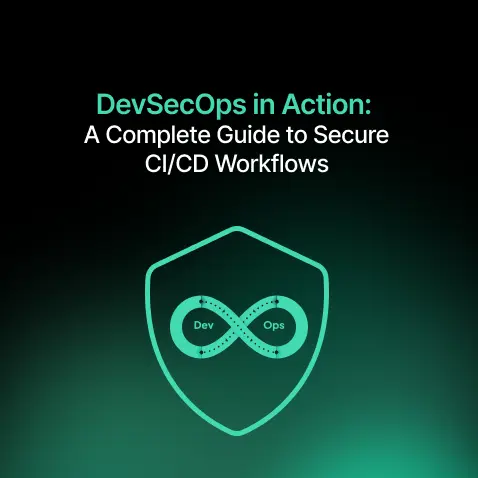
DevSecOps in Action: A Complete Guide to Secure CI/CD Workflows
- Blog
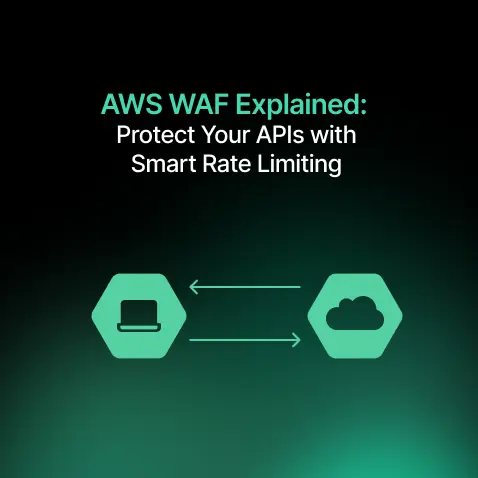
AWS WAF Explained: Protect Your APIs with Smart Rate Limiting
- Blog

